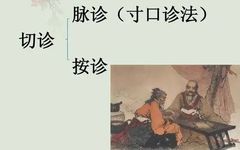Click the blue text

Follow us

Theoretical Basis of Pediatric Tuina in TCM
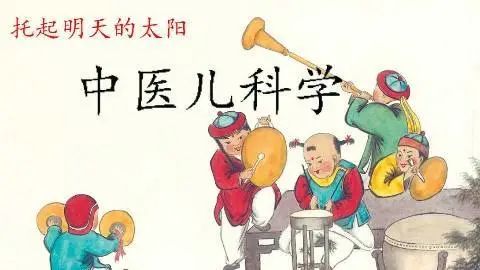
Pediatric TCM is a medical science guided by the theoretical system of Traditional Chinese Medicine (TCM), utilizing traditional Chinese medicine methods such as herbal medicine, acupuncture, and tuina (pediatric massage) to study the growth and development, physiological pathology, nutrition, health care, and the prevention and treatment of various diseases in children from fetal stages to adolescence.
Pediatric TCM integrates the rich experiences of child-rearing and disease prevention and treatment accumulated by the Chinese nation over thousands of years, gradually forming its own theoretical and practical system with the development of TCM.

+
Section Four: Pulse Diagnosis in Pediatrics
Pulse diagnosis mainly involves parents pressing or touching certain parts of the child’s body to understand the child’s disease condition, primarily including pulse diagnosis and palpation.
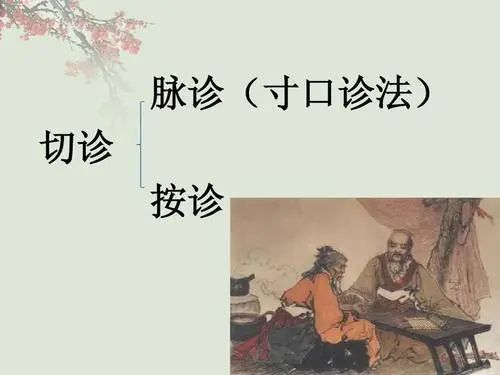
Children cannot control their behavior and emotions, and their physical constitution differs from that of adults, so diagnosing a child’s pulse is different from diagnosing an adult’s pulse. During pulse diagnosis, it is essential to grasp the characteristics and analyze them comprehensively. The child’s cun (寸), guan (关), and chi (尺) pulse positions are small and difficult to distinguish. Additionally, children may cry or become frightened during the examination, causing their qi to become chaotic, leading to an irregular pulse, making diagnosis challenging. Therefore, pediatric diagnosis emphasizes observing the child’s shape, color, and orifices. Later generations of physicians developed a method called “one finger to assess three positions,” which is the primary method for diagnosing a child’s pulse.
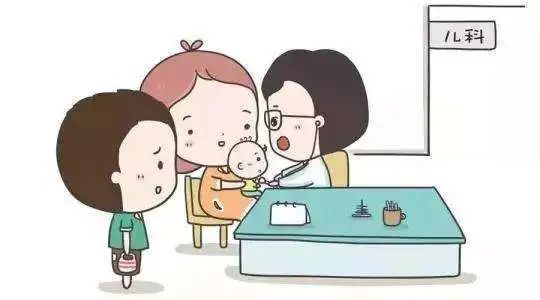
The method of diagnosing the pulse with one finger is abbreviated as “one finger to assess three positions.” The operation method is: use the left hand to hold the child’s hand. For children under three years old, the right thumb can be pressed on the pulse at the back of the child’s palm without distinguishing the three positions, focusing on the pulse count. There are also methods using the index finger to press the three positions directly or to roll the index finger across the pulse for diagnosis. For children over four years old, the midline of the back of the hand is used as the guan, and the index finger is rolled to the sides to assess the three positions; for children aged seven to eight, the thumb can be moved to diagnose the three positions; for children aged nine to ten, the pulse can be diagnosed sequentially according to cun, guan, and chi; for those over fifteen, the adult pulse diagnosis method can be used.

The pulse characteristics in children are generally diagnosed as floating or sinking, slow or rapid, strong or weak, and tense or relaxed to differentiate between yin and yang, exterior and interior, cold and heat, and the excess or deficiency of pathogenic factors. For children under three years old, a pulse rate of seven to eight beats per breath is considered normal; for children aged five to six, six beats per breath is normal, while seven or more is considered rapid, and four to five is considered slow. Rapid pulses indicate heat, while slow pulses indicate cold; floating rapid pulses indicate yang, while sinking slow pulses indicate yin. Strong pulses can indicate excess, while weak pulses can indicate deficiency. Tense pulses indicate cold, while relaxed pulses indicate dampness. Uneven pulse sizes often indicate food stagnation. For children under three, finger observation can replace pulse diagnosis.
Palpation is a method where the physician uses their fingers to press on the patient’s body surface to diagnose diseases. Palpation includes both palpation and pulse diagnosis, and should be performed in a state that keeps the child as calm as possible.
1. Palpation includes pressing and touching the head fontanel, neck, armpits, limbs, skin, chest, and abdomen.
(1) Pressing the head fontanel
If the child’s fontanel is delayed in closing, it indicates insufficient kidney qi and poor development; if the fontanel fails to close on time and instead enlarges, it is called “open fontanel.” A sunken fontanel is termed “sunken fontanel,” often indicating fluid deficiency or yin injury; a bulging fontanel is termed “bulging fontanel,” often indicating excessive heat or liver fire.
(2) Pressing the neck and armpits
If small nodules are felt in the neck and armpit area, slightly hard and not adhered, they are termed “bone cores.” If there is inflammation or infection in the head, face, or throat, the bone cores may be painful, indicating phlegm-heat obstruction; if they are in a string formation, hard in texture, and difficult to move, they may indicate phlegm cores or lymphadenopathy.
(3) Pressing the limbs
Cold limbs often indicate yang deficiency; hot skin on the limbs often indicates heat syndrome. If the limbs are spasmodic or twitching, it may indicate convulsions; if the limbs are weak and thin, it may indicate atrophy.
(4) Pressing the skin
This helps to understand the conditions of cold, heat, and sweating. Cold skin with excessive sweating indicates insufficient yang qi; hot skin without sweating indicates excessive heat; burning sensations in the palms and soles indicate yin deficiency with internal heat. Swelling of the skin that rises with pressure indicates yang water edema; swelling that remains depressed indicates yin water edema.
(5) Pressing the chest and abdomen
A protruding sternum indicates pigeon chest, while a protruding thoracic vertebra indicates hunchback. Protruding ribs at the front ends are termed “bead ribs,” and a concave thorax at the diaphragm area is termed “thoracic groove,” all resulting from congenital insufficiency or improper postnatal care.
The child’s abdomen should be soft and gentle, without distension or pain. If there is a mass felt under the left rib, it may indicate spleen enlargement; if there is a mass under the right rib, it may indicate liver enlargement. Abdominal pain that is relieved by pressure often indicates deficiency or cold; abdominal pain that is aggravated by pressure often indicates excess or heat. If a mass is felt in the left lower abdomen resembling a sausage, it may indicate fecal impaction; if a round mass is felt in the right lower abdomen, it may indicate intestinal abscess; if a mass in the abdomen does not disperse upon pressure, it may indicate intestinal obstruction; if a mass can be dispersed by massage, it may indicate parasitic accumulation. Abdominal distension that sounds like a drum upon percussion indicates gas distension; if the sound is dull and changes with body position, it may indicate water retention.
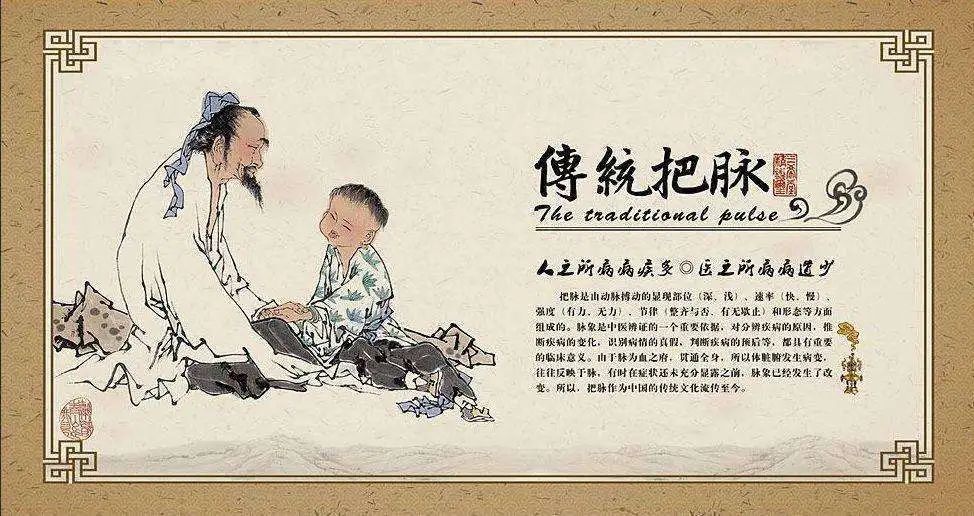
2. Pulse diagnosis is generally used for children over three years old. The pulse at the child’s cun position is short, and the pulse can be diagnosed using the “one finger to assess three positions” method, where the physician’s right index or thumb is pressed on the child’s cun position.
Due to the physiological differences between children and adults, historical physicians have had varying understandings of pediatric pulse diagnosis methods, such as the age for pulse diagnosis, finger placement during diagnosis, and pulse rates. As noted by Ming Dynasty physician Zhang Jiebin in “Jingyue Quanshu”: “When diagnosing children, since they cannot communicate verbally, pulse diagnosis should be the primary method, supplemented by observations of shape, color, and sound to ensure accuracy.” This highlights the importance and necessity of studying pediatric pulse diagnosis.
The normal pulse in children is generally harmonious, finer, and faster than in adults. The younger the child, the faster the pulse. If calculated based on normal adult respiratory rates, newborns have a pulse of 7-8 beats per breath, 1-3 years old have 6-7 beats, 4-7 years old have about 6 beats, and 8-13 years old have about 5 beats. If the pulse rate increases due to activity or crying, it should not be considered pathological.
The pathological pulse patterns in children are generally simplified compared to adults. The basic pulse patterns in pediatrics are classified into six types: floating, sinking, slow, rapid, strong, and weak. Floating pulses indicate exterior conditions, sinking pulses indicate interior conditions, slow pulses indicate cold conditions, and rapid pulses indicate heat conditions. Strong pulses indicate excess conditions, while weak pulses indicate deficiency conditions. These six pulse patterns can coexist, such as floating rapid pulses indicating exterior wind-heat, sinking slow pulses indicating yang qi deficiency, rapid strong pulses indicating excess heat, and rapid weak pulses indicating deficiency heat. Of course, other pulse patterns can also be observed in pediatrics, such as slippery pulses indicating excessive heat, phlegm-dampness, or food stagnation; flooding pulses indicating excessive heat in the qi level; knotty pulses indicating qi and blood deficiency or cold stagnation; and intermittent pulses indicating qi and blood deficiency. String-like pulses can indicate convulsions, abdominal pain, or phlegm accumulation.

Methods of Palpation and Pulse Patterns
The methods of palpation diagnosis in children are fundamentally similar to those used in adult internal medicine, based on the four examinations, eight principles, organs, and meridians for differential analysis. However, due to the physiological and pathological peculiarities of children, their responses to symptoms during growth and development are unique, thus the application of diagnostic methods differs from adults. Additionally, infants cannot speak, and even children who can speak often cannot accurately describe their symptoms, leading ancient practitioners to refer to pediatrics as the “mute department.” Furthermore, due to the small size of the child’s cun position, it cannot accommodate three fingers to assess the cun, guan, and chi positions, hence the “one finger to assess three positions” method is adopted. The pulse rate in children can increase significantly due to feeding, crying, or movement, so diagnosis during sleep or quietness is most accurate.
Moreover, children’s pulse rates are generally faster; for those under three years old, a pulse of six to seven beats per breath is considered normal, decreasing with age. The pulse patterns in children primarily include eight common types: floating, sinking, slow, rapid, string-like, slippery, fine, and hurried. As noted by Qing Dynasty physician Zhou Xuehai in “Mai Yi Jian Mo”: “The pulse in children indicates diseases similar to adults, but the positions are much narrower, making differentiation difficult. However, the causes of diseases in children are limited, so the pulse patterns should not vary much, and there is no need to create many names to show off.” The main diseases indicated by the pulse include rapid heat and slow cold, floating exterior and sinking interior, which are fundamentally consistent with adults. As Zhou Xuehai stated: “Rapid pulses indicate heat and belong to the fu organs. Slow pulses indicate cold and belong to the zang organs. Rapid yang pulses indicate vomiting; if not vomiting, it indicates fever. Weak yin pulses indicate diarrhea; if not diarrhea, it indicates night sweats. Sinking rapid pulses indicate cold and heat, with more cold than heat, also indicating bone steaming; tight rapid pulses indicate cold and heat, with more heat than cold, also indicating bone steaming, and sudden onset indicates convulsions. Sinking tight pulses indicate abdominal pain; short rapid pulses also indicate cough (cough pulses should avoid sinking tight). Sinking fine pulses indicate undigested food and also indicate abdominal pain with diarrhea.

Previous Recommendations

+
If the spine is misaligned, various diseases arise; TCM bone-setting is essential—understanding the morphology and function of the spine
+
If the spine is misaligned, various diseases arise; TCM bone-setting essential course two—causes and functions of nerve reflex pain
+
If the spine is misaligned, various diseases arise; TCM bone-setting essential course three—understanding the distribution of spinal nerves and symptoms of compression and paralysis
+
If the spine is misaligned, various diseases arise; TCM bone-setting essential course four—basic techniques of spinal adjustment and lumbar spine fixation
+
If the spine is misaligned, various diseases arise; TCM bone-setting essential course four—basic techniques of spinal adjustment (origin and significance of English codes)
+
If the spine is misaligned, various diseases arise; TCM bone-setting essential course five—characteristics of cervical vertebrae
+
If the spine is misaligned, various diseases arise; TCM bone-setting essential course five—pathological examination and correction of cervical vertebrae
+
If the spine is misaligned, various diseases arise; TCM bone-setting essential course six—relief of cervical vertebrae pathology
+
If the spine is misaligned, various diseases arise; TCM bone-setting essential course seven—adjustment techniques for cervical vertebrae and protection
+
If the spine is misaligned, various diseases arise; TCM bone-setting essential course eight—relationship and symptoms of cervical nerves and skin nerve ganglia
+
If the spine is misaligned, various diseases arise; TCM bone-setting essential course nine—characteristics, sources, and main factors of thoracic pain
+
If the spine is misaligned, various diseases arise; TCM bone-setting essential course ten—examination of the thoracic spine and relief of thoracic joints
+
#Daily Lesson on Pediatric Tuina in TCM#Infant Diarrhea
+
#Daily Lesson on Pediatric Tuina in TCM#Detailed Explanation of Common Pediatric Tuina Techniques, Recommended for Collection
+
#Daily Lesson on Pediatric Tuina in TCM#TCM Health Preservation of Yin-Yang and Five Elements
+
#Daily Lesson on Pediatric Tuina in TCM#Theoretical Basis of TCM Organ Systems
+
#Daily Lesson on Pediatric Tuina in TCM#Theoretical Basis of TCM Organ Systems (Lung and Large Intestine Relationship)
+
#Daily Lesson on Pediatric Tuina in TCM#Theoretical Basis of TCM Organ Systems (Spleen and Stomach Relationship)
+
#Daily Lesson on Pediatric Tuina in TCM#Theoretical Basis of TCM Organ Systems (Liver and Gallbladder Relationship)
+
#Daily Lesson on Pediatric Tuina in TCM#Theoretical Basis of TCM Organ Systems (Kidney and Bladder Relationship)
+
#Daily Lesson on Pediatric Tuina in TCM#Theoretical Basis of TCM Organ Systems, Relationships Among the Five Zang Organs


Kanghui Medical and Nursing School

Scan to follow us
Editor: Yan Yan
Images: Source from the internet, copyright belongs to the original designer
Text Source: Kanghui Medical and Nursing School, copyright belongs to the original author
Disclaimer: We respect originality; if there are any text or image infringements, please inform us immediately, and we will delete them within 24 hours. Thank you.

